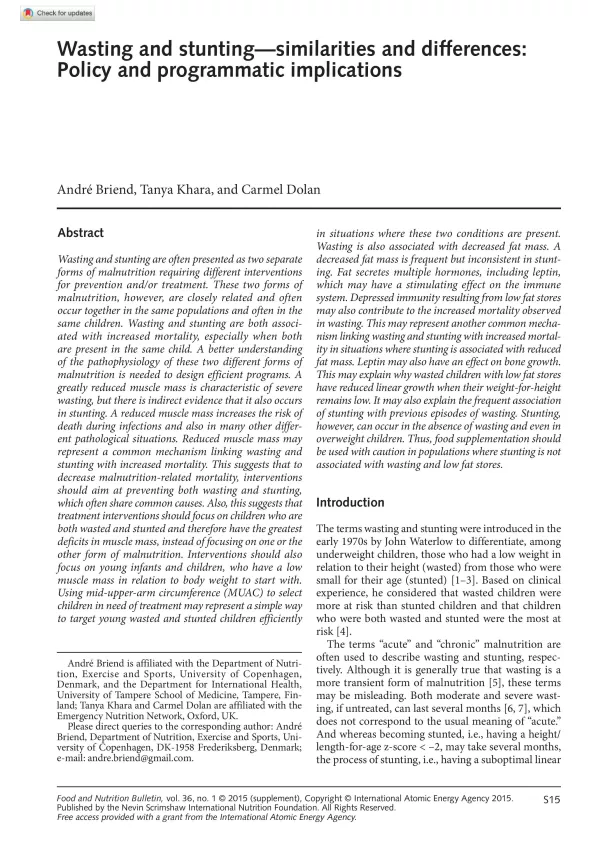Wasting and stunting—similarities and differences: Policy and programmatic implications
Publication details
Abstract
Wasting and stunting are often presented as two separate forms of malnutrition requiring different interventions for prevention and/or treatment. These two forms of malnutrition, however, are closely related and often occur together in the same populations and often in the same children. Wasting and stunting are both associated with increased mortality, especially when both are present in the same child. A better understanding of the pathophysiology of these two different forms of malnutrition is needed to design efficient programs. A greatly reduced muscle mass is characteristic of severe wasting, but there is indirect evidence that it also occurs in stunting. A reduced muscle mass increases the risk of death during infections and also in many other different pathological situations. Reduced muscle mass may represent a common mechanism linking wasting and stunting with increased mortality. This suggests that to decrease malnutrition-related mortality, interventions should aim at preventing both wasting and stunting, which often share common causes. Also, this suggests that treatment interventions should focus on children who are both wasted and stunted and therefore have the greatest deficits in muscle mass, instead of focusing on one or the other form of malnutrition. Interventions should also focus on young infants and children, who have a low muscle mass in relation to body weight to start with. Using mid-upper-arm circumference (MUAC) to select children in need of treatment may represent a simple way to target young wasted and stunted children efficiently in situations where these two conditions are present. Wasting is also associated with decreased fat mass. A decreased fat mass is frequent but inconsistent in stunting. Fat secretes multiple hormones, including leptin, which may have a stimulating effect on the immune system. Depressed immunity resulting from low fat stores may also contribute to the increased mortality observed in wasting. This may represent another common mechanism linking wasting and stunting with increased mortality in situations where stunting is associated with reduced fat mass. Leptin may also have an effect on bone growth. This may explain why wasted children with low fat stores have reduced linear growth when their weight-for-height remains low. It may also explain the frequent association of stunting with previous episodes of wasting. Stunting, however, can occur in the absence of wasting and even in overweight children. Thus, food supplementation should be used with caution in populations where stunting is not associated with wasting and low fat stores.

